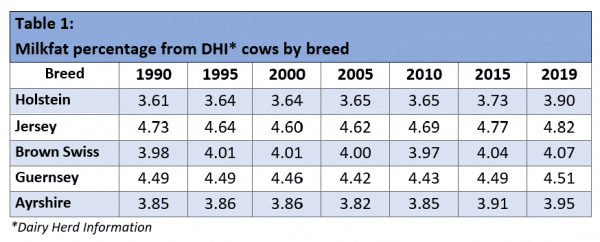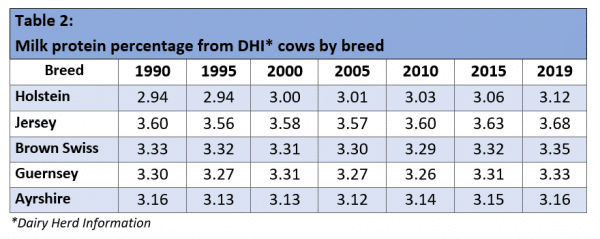A recent note in a dairy publication caught my attention: U.S. consumption of fluid dairy products is shifting. Most folks are probably aware there had been a swing away from margarine back to butter. This started around 2014 when Time magazine had a cover story outlining the health benefits of consuming butter and health concerns from eating hydrogenated foods. Many restaurants and fast-food establishments switched to the healthier spread – butter.
A positive shift in milk consumption has taken place as well. For the third year in a row, whole milk is the largest category of fluid milk sales, surpassing total 2% milk sales since 2018. Whole milk sales increased 3.2% in 2020 over the previous year. Two-percent milk remained the second highest volume category, up 3.5% over the same year. Sales of 1% was down 4.3% and skim milk was down 13.4% (less than half of 2010 skim milk sales).
The very good news is that U.S. cows have been ahead of the consumers by producing milk with higher components. Since year 1990 for Holsteins and 2000 for Jerseys, the increases in milk components have been substantial, particularly for fat. Table 1 shows the change in milkfat percentage for selected years by breed.

Protein percentages also increased for most breeds, as shown in Table 2. Nearly all producers were paid for delivering higher milkfat for well over a century; however, most have received compensation for protein only for the last 20 years. Protein test for Holsteins increased by 0.18 from 1990 to 2019 which is remarkable considering that milkfat, which has greater variation, was up only 0.29. The protein test increased for Jerseys by 0.11 between 2005 and 2019. For a complete picture of yearly trends, view this CDCB Research Report.

Fluid milk consumption took a hit last year because most schools were limited to virtual instruction due to COVID-19 isolation. It appears the amount of in-classroom instruction will increase this year; therefore, students will benefit in several ways. Another development: there is a grassroot-effort underway to end the prohibition of whole and 2% milk in the school lunch programs, which has been in existence since 2010. Many students prefer a higher solids alternative to skim milk, so if this campaign is successful, per-capita consumption of dairy among youth surely will increase.
Regardless, our cows are doing their part to provide the product needed by the industry to meet consumer demands. It is shocking what these “foster mothers of the human race” are capable of and have achieved already. Nevertheless, let’s remember that dairy producers and industry are leading them along, which determines the direction and speed they travel.
The bottom line: The “human race” had better be sure they’re leading in the right direction.
Source: CDCB Written by: H. Duane Norman




